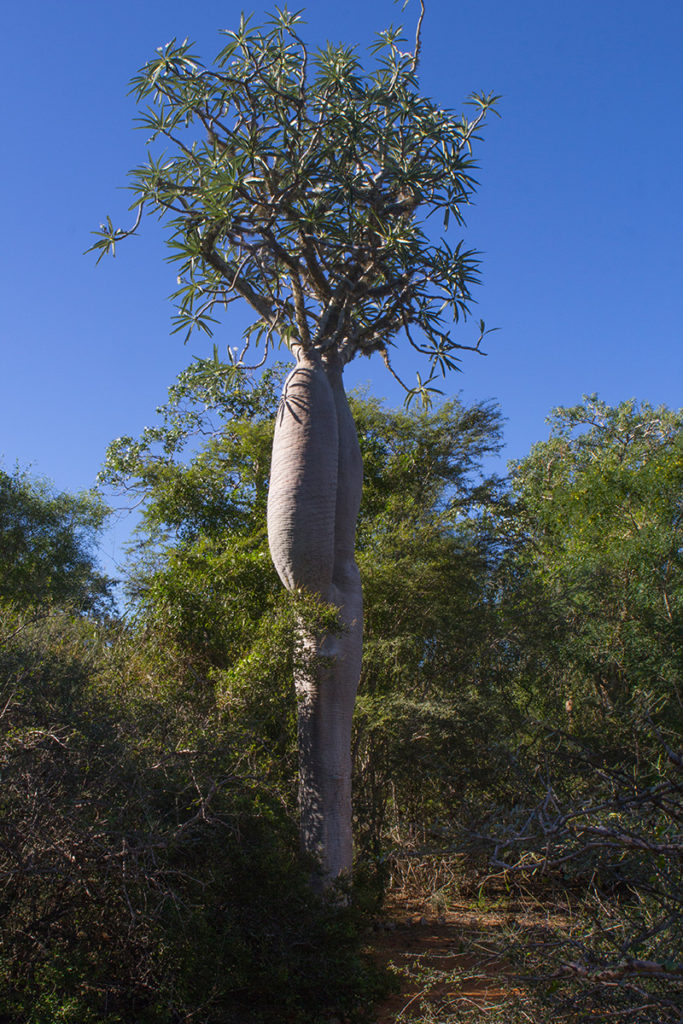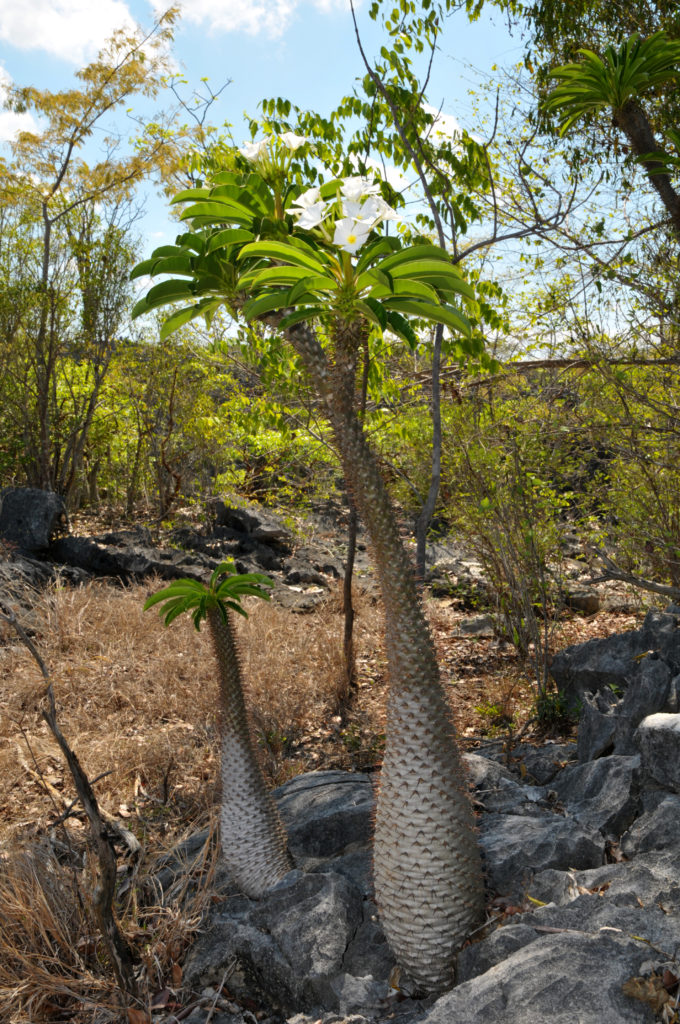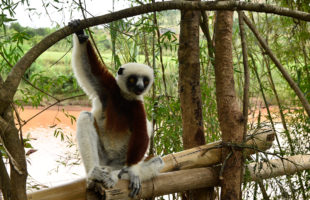Madagascar Palms
Who doesn’t know them, the characteristic, bulbous trees of Madagascar? We are not talking about the world-famous baobabs, but the Madagascar palms. But they are not palms. They actually belong to the dogbane family. Better simply use the botanical name of the genus: Pachypodium.
Pachypodium belong to the succulents, plants that are particularly good at storing water. You can see that in their appearance: Their stems are bulbous, wrinkled and bulging with age. This adaptation to barren regions enables them to survive long dry periods unscathed and to survive in particularly inhospitable areas of Madagascar. During this time, when there is little or no rain, all Pachypodium shed their leaves. As protection against animals and humans, the trunk of the bottle trees is additionally covered with thorns. In twos or threes, the thorns sit on a small, wart-like outgrowth up to several centimetres long. The larger and older a bottle tree becomes, the fewer thorns the trunk has. There are 22 species of Pachypodium worldwide. A fully 17 of them are endemic to Madagascar.
The different species – large Pachypodium
Pachypodium divides into two growth forms. Some species look like bottle-shaped trees and, when old enough, resemble the famous baobabs. The two most classic representatives of this growth form and among the most common Pachypodium of Madagascar are Pachypodium lamerei and Pachypodium geayi. Both colonize the entire south and southwest from the Tsingy de Bemaraha over Ifaty, Toliara and Itampolo to Cap St. Marie and to Tolagnaro. They are very adaptable and can cope with a variety of habitats. Thorn forest or savanna, dry forest or inselbergs, these pachypodium will take what they can colonize. Pachypodium geayi prefers coastal areas and grows to an average height of four to five meters, with individual specimens rarely reaching ten meters. Pachypodium lamerei also occurs higher up, growing two to eight meters skyward. It does not flower for the first time until it reaches a growth height of one and a half to two meters.
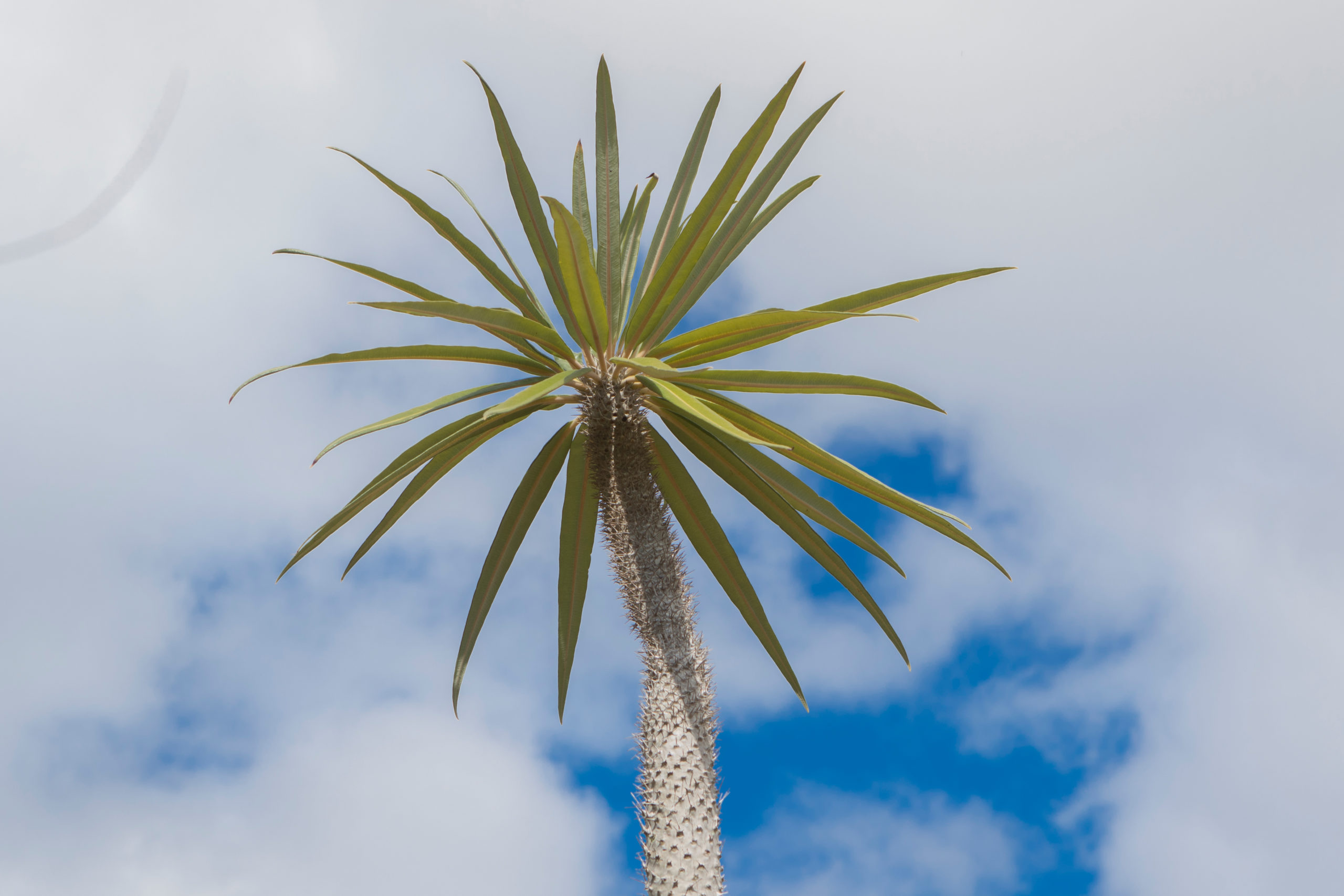
In the opposite part of Madagascar lives Pachypodium rutenbergianum. It occurs in the far north of Madagascar, from Antsiranana and Ankarana and the Montagne de Francais to Daraina and the island of Nosy Be. In addition, Pachypodium rutenbergianum is found in western Madagascar from Mahajanga and Kirindy to Maevatanana and Antsohihy. The trunk grows three to eight meters high and can reach a diameter of 60 centimetres.
Also arboreal and growing up to eight meters high is Pachypodium sofiense, which occurs mainly in the west and north of Madagascar. The Tsingy de Bemaraha and the protected area of Beanka are its home. This bottle tree grows preferentially on limestone and gneiss. Pachypodium sofiense is considered endangered in its population.
In a small part of the same range, namely only in the Tsingy de Bemaraha, Pachypodium menabeum occurs. It actually grows on and among the Tsingy. It was named after the region where it occurs: Menabe. Most trees of this species are between two and five meters high. The trunk can reach a diameter of 30 to 40 centimetres. Visually, Pachypodium menabeum can be easily confused with Pachypodium lamerei. However, the smaller size, the more bulbous trunk and the smooth leaves distinguish it very clearly from the larger sister species at second glance.
And while we are in the west: A little further south is the habitat of Pachypodium mikea. This bottle tree stretches its crown about four to five meters into the air and is found mainly in spiny forests on the southwest coast of Madagascar. In Ifaty, along Salary Bay or in Andavadoaka, Pachypodium mikea can be found. This tree was named after the Mikea people, the last nomads of Madagascar, who live very hidden in this region. And like its namesakes, this bottle tree is special: it grows only on sandy soil or limestone and is always within sight of the coast. Pachypodium mikea blooms at the end of the rainy season, in February and March.
Far away in the north around Antsiranana to the west of Madagascar around Mahajanga lives Pachypodium baronii. This tree remains somewhat smaller, only half a meter to two meters high. It grows mainly on limestone, granite and gneiss rocks in subhumid and dry forests. Whoever discovers this bottle tree can rejoice: the species is considered endangered and rare.
Also rather difficult to find is Pachypodium ambongense from northwestern Madagascar. This bottle tree grows only up to one and a half meters tall and is hardly branched. The thorns can reach up to ten centimetres in length.
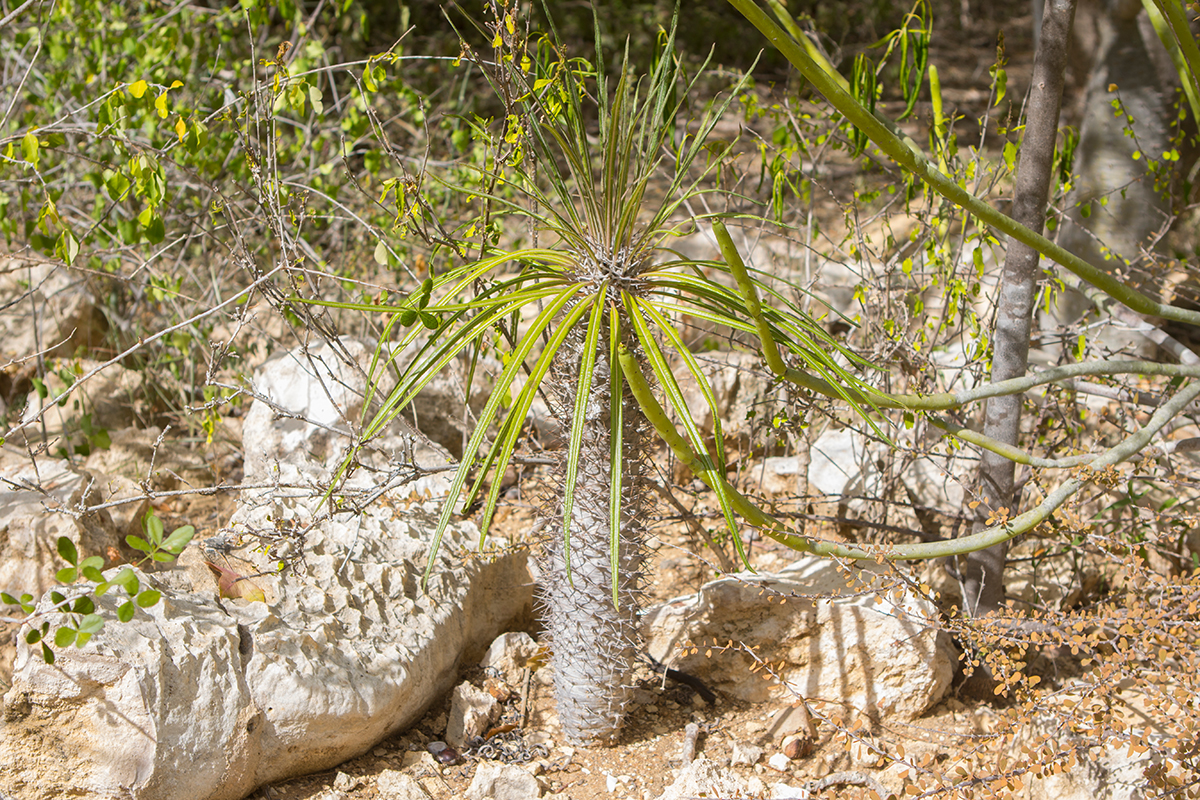
A third semi-high species from the north is Pachypodium decaryi. It grows only up to two meters high but reaches a good 40 centimetres in diameter of the trunk. This species is native to the northernmost tip of Madagascar, in the areas around Ankarana, Antsiranana and the Montagne des Français. The peculiarity of this bottle tree is that the spines are very reduced.
The small ones among the Pachypodium
The second growth form of Pachypodium is much lower. These trees have an extremely widened and very low trunk, which is hardly recognizable as such. This unusual growth form of the trunk even has its own name: Caudex.
A typical representative of this whimsical growth form is Pachypodium brevicaule. The trunk is wider than high and can reach up to one meter in diameter. The species grows mainly on rocks in the central highlands between Itremo and Antsirabe. Pachypodium brevicaule blooms at the beginning of the rainy season, from October to December.
Also very low, but a little bit bigger grows Pachypodium densiflorum. This little tree reaches a trunk of 70 centimetres in height but also manages an incredible two meters in diameter. This Pachypodium also blooms at the beginning of the rainy season. It can be found quite well in the southern highlands around Ambalavao, Itremo, Ambositra, but also in Andringitra National Park and near Ihosy. Basically, however, the plant is widespread throughout the highlands.
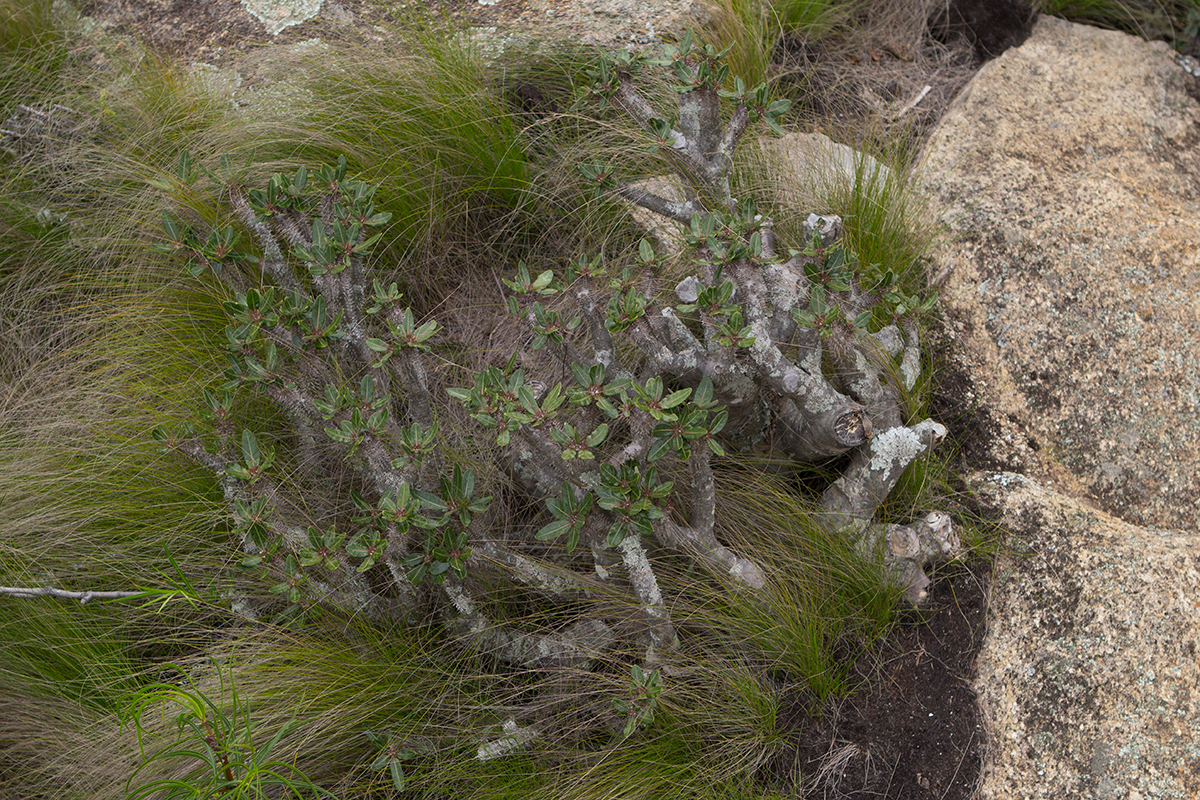
A third representative of the low-stemmed Pachypodium is Pachypodium eburneum. Similar to the previous two, this species occurs on quartz rock in the highlands, but only two populations are even known. Of these, one is near Betafo and one is in the Ibity Massif, although it is now thought to be extinct. Scientists currently estimate that there are less than one hundred individuals remaining. Accordingly, Pachypodium eburneum is considered to be in danger of extinction. It thus resembles Pachypodium inopinatum, of which only one population is known to exist in the highlands. Unfortunately, it does not even occur in protected areas, so this little tree is also considered to be threatened with extinction.
A Pachypodium from the western highlands around Mandoto, exactly between Miandrivazo and Antsirabe, has not been described for a long time. It was discovered only a few years ago. Actually you would think that nothing exciting would grow in the bare grassland of this area. But Pachypodium enigmaticum can be found exactly there, mostly sitting on quartz rocks. The small tree grows only ten to fifteen centimetres tall, but up to 40 centimetres in width. The enormous width is partly due to the fact that several stems of one plant literally merge with each other. Pachypodium enigmaticum blooms in the dry season, from June to July.
One of the best-known representatives of the low-stemmed Pachypodium is Pachypodium rosulatum. The caudex of this little tree measures up to one meter in diameter. On the flat, broad trunk sit countless long, slender branches that grow up to a meter and a half long. In exceptional cases, individual branches even reach more than three meters in height. There are six different subspecies. The original variety, Pachypodium rosulatum rosulatum, can be found in northern Madagascar. Pachypodium rosulatum bemarahense is found in the Tsingy de Bemaraha, which gives it its name. Pachyodium rosulatum bicolor lives a little more south of the Tsingy in the dry west of Madagascar. More centrally in the south, you can discover Pachypodium rosulatum gracilius. The Makay massif in the southwest is the namesake and home of Pachypodium rosulatum makayense. Pachypodium rosulatum cactipes, so named because of its cactus-like appearance, is found in the southeast.
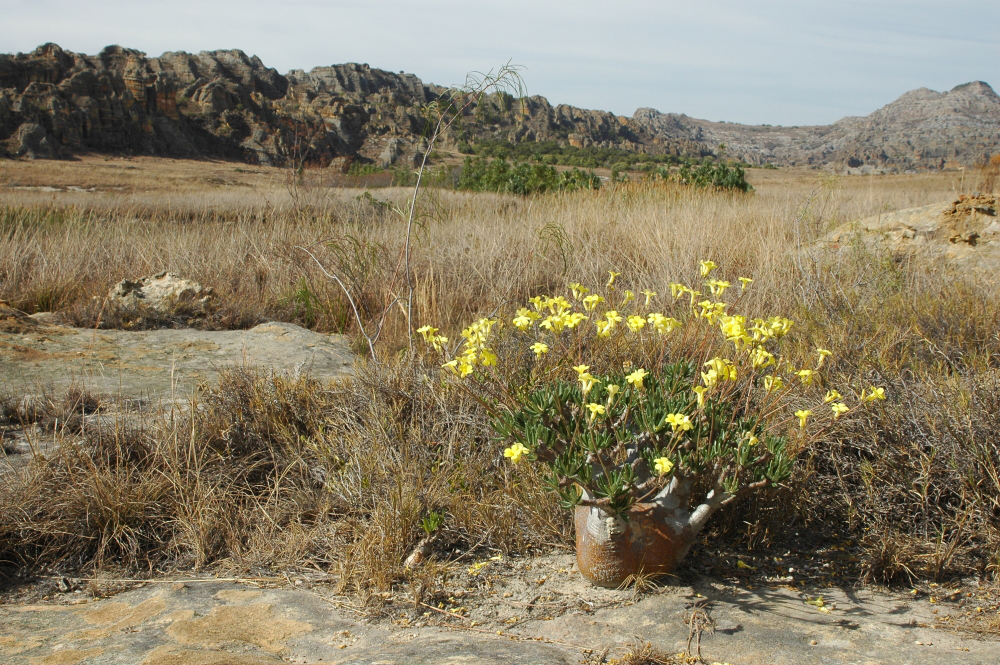
In the south and central south of Madagascar around the mountains of Isalo, you can find Pachypodium horombense, named after the Ihorombe plain there. It is low trunked and you need a lot of luck to spot this Pachypodium.
At the opposite end of Madagascar, around Antsiranana and the Montagne des Français, Pachypodium windsorii is still native. This Pachypodum does not reach more than one meter in height. Its trunk and branches grow so low that in some plants of this species it is not possible to tell at first sight which part is the main trunk.
Pachypodium can be found today worldwide as a fancier plant
Most Pachypodium flowers are white or yellow. Only Pachypodium baronii and windsorii break ranks: they have bright red or pink flowers. Only adult plants flower, while younger ones do not yet. Bottle trees in Madagascar are pollinated by various insects attracted to the large, bright flowers.
Pachypodium is now common throughout the world as ornamental plant. Most commonly found outside of Madagascar is Pachypodium lamerei, as it is relatively easy to care for and propagate. But also the other Pachypodium have their lovers and real specialists in care and keeping. Especially the rustic growth forms of the low-stemmed Pachypodium are popular, but not so easy to keep. However, some people are happy to accept the challenge. And quite a few people travel to Madagascar – the land of baobabs and bottle trees – because of the Pachypodium.
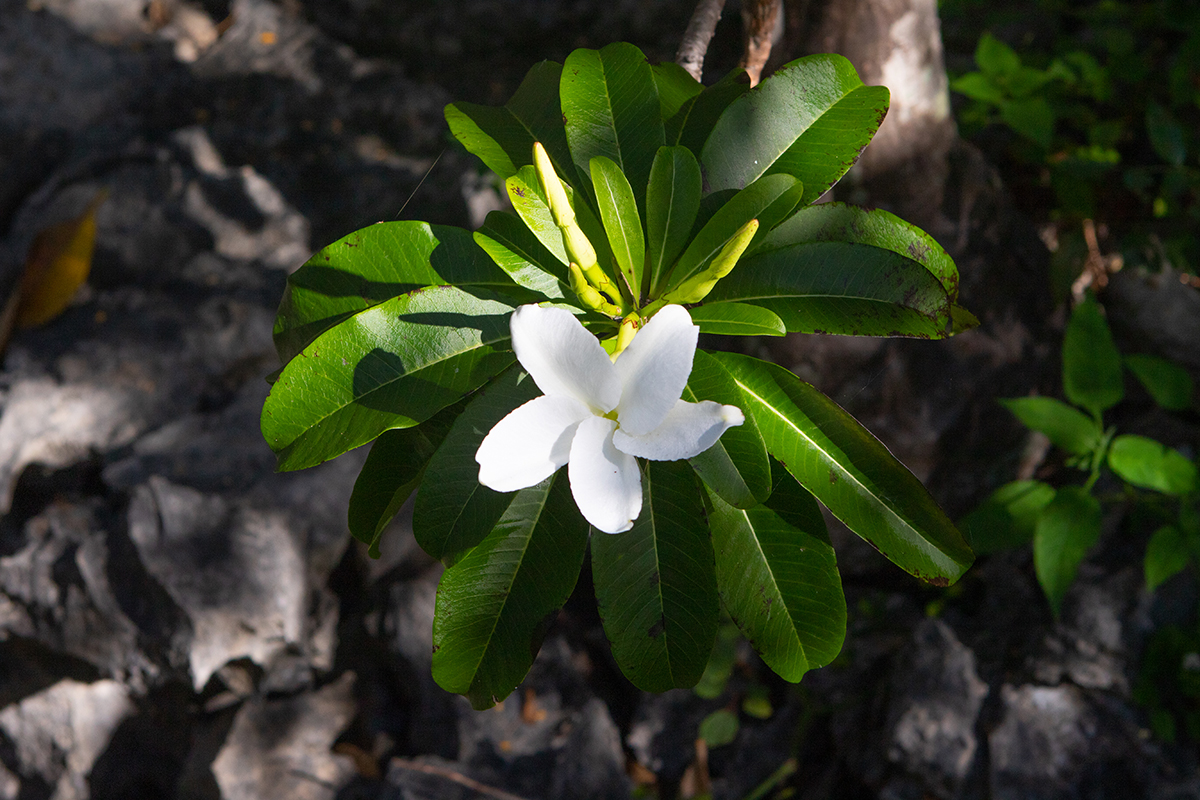
 MADAMAGAZINE Your Magazine about Madagascar
MADAMAGAZINE Your Magazine about Madagascar
